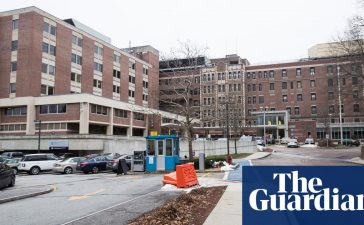To hear Sasha Zbrozek tell it, the story behind his plans to tear down his four-bedroom house in tony Los Altos Hills and replace it with an apartment complex is a simple tale of a young man’s California dream home being ruined by the region’s notorious red tape — and his decision to “rage against the machine.”
Just how might Zbrozek, a 34-year-old electrical engineer and Stanford grad, get away with his proposal to build 15 apartments and five townhomes in the wooded Silicon Valley suburb that’s long resisted multifamily housing?
Enter the “builder’s remedy,” a provision in state housing law that could allow property owners to override local zoning laws and push through projects of virtually any size almost anywhere they please.
READ MORE ON BUILDER’S REMEDY: Developers propose 576 homes in Orange, some at the mall, others by hospital
Zbrozek’s plan is one of the first attempts in the Bay Area to invoke the provision, meant as a penalty for cities and counties that fall behind on their state-mandated future homebuilding plans.
As of Saturday afternoon, Los Altos Hills was just one of the 105 of 109 Bay Area cities and counties that hadn’t gotten the state to sign off on their every-eight-year plans due Jan. 31. And advocates aren’t optimistic the billionaire haven of Los Altos Hills, where the average home value according to Zillow is around $5 million, will get approval any time soon.
Zbrozek said he got the idea to use the builder’s remedy during what he describes as an ongoing nightmare trying to get the necessary approvals and permits to repair his home after it was severely water damaged by storms in 2019 not long after he bought it. So soon after the January housing plan deadline passed, he filed the proposal with the town’s planning department.
“There’s this option sitting in front of me to do something very different, and the town can’t say no,” Zbrozek said.
Zbrozek and his wife moved into the home, on a 2-acre property in a quiet neighborhood dotted with mansions near Foothill College, in hopes of raising a family there. But if he gets to move forward with the apartment complex project, he’d likely sell it off to a developer to build it and move back to the Southeast where he grew up.
State housing law requires that at least 20% of the units in any builder’s remedy project be affordable. Zbrozek said the high rents and sale prices developers can ask for in the Silicon Valley area should offset the reduced revenue from the cost-restricted units.
“Even my Monday morning quarterbacking at a spreadsheet says it probably pencils,” he said. “Maybe I can cash something out for having lived in a cold, wet house for three and a half years.”
RELATED: Lennar defies La Habra’s Measure X, files what could be ‘builder’s remedy’ application
He’s also filed a second, smaller proposal, which would just include the five townhomes. If that project is approved, he might decide to stay put.
Zbrozek’s architect for the project, Mark Hogan, said developers have only recently tried using the three-decade-old law — notably for about 20 mostly massive proposed projects in Southern California. That means it’s possible Zbrozek’s plans could still get tied up in bureaucracy and litigation, Hogan said.
“There’s no precedent in the area for doing one of these,” he said. “Nobody knows exactly how it’s going to play out.”
In a statement, Los Altos Hills City Attorney Steve Matias acknowledged the town had received the two proposals, writing that “staff will communicate next steps to the applicant in accordance with relevant timeframes.”
Matias said the town is working closely with the state on its plan and is committed to meeting its increased housing goal of 438 new homes for people of all income levels by 2031.
Anne Paulson, an advocate with the pro-housing group Los Altos YIMBY, is skeptical that town officials are making real progress on the plan. Recently, a number of other ultra-wealthy towns in the area have been accused of trying to skirt their housing responsibilities through bad-faith policies. Woodside, for instance, made headlines last year for declaring part of the town a mountain lion sanctuary in an effort to prevent new homes in the area. And Hillsborough is mulling building a project specifically for developmentally disabled adults, apparently to stave off new housing for other low-income residents.
In Los Altos Hills, Paulson said the planning process has become “pointlessly picky and obscure and in every way designed to make building anything difficult” and appease residents opposed to more housing.
MORE ON HOUSING: Most cities still falling behind affordable housing mandate, state numbers show
So how might neighbors there respond to Zbrozek’s plans?
“They’re gonna hate it,” Paulson said. “They’re definitely going to hate it.”






